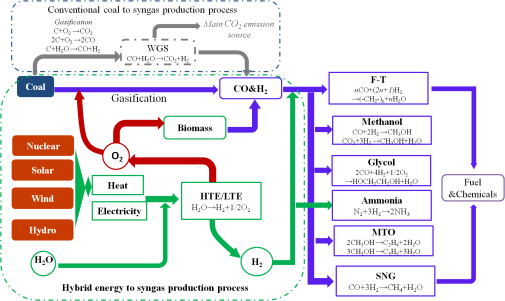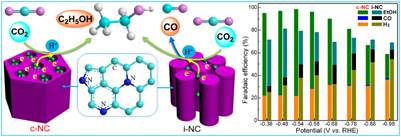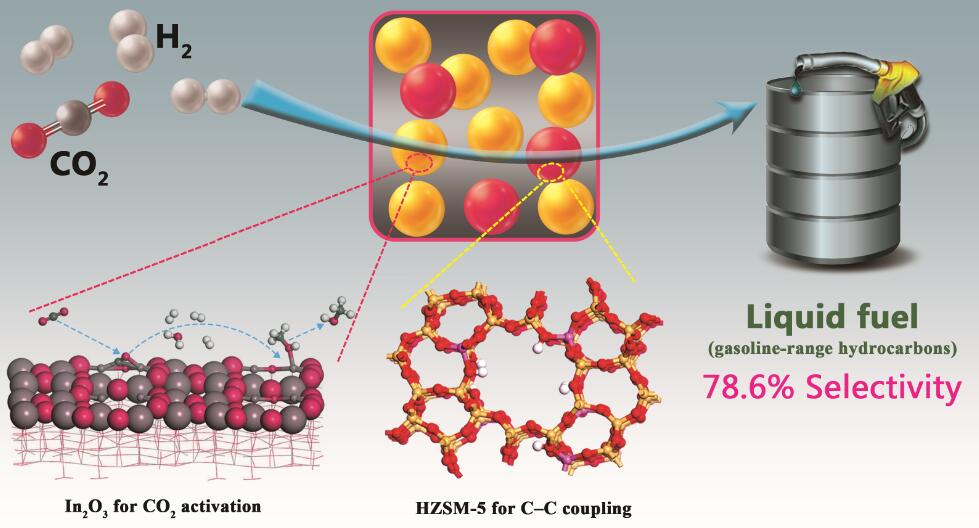Research Progress

Hybrid Energy System Proposed for a Coal-Based Chemical Industry
Recently, a joint research team proposed a hybrid energy system which integrates nuclear/ renewable energy with coal for a coal-based chemical industry. The latest result was published in the famous scientific journal Joule.

Researchers Develop New Electrocatalysts to Convert CO2 into Value-added Chemicals
Conversion of carbon dioxide (CO2) into fuels and chemicals by electroreduction has attracted significant interest, although it suffers from a large overpotential and low selectivity. A Pd-Sn alloy electrocatalyst was developed for the exclusive conversion of CO2 into formic acid in an aqueous solution.
A Big Step Forward in Greenhouse Gas Conversion
A demonstration project of producing syngas from carbon dioxide has passed an industrial demonstration in north China’s Shanxi Province recently. It’s the world’s largest production test plant of Mnm3/h scale CO2-CH4 reforming.
CO2-to-Acrylate: a Dream Reaction for 40 years
A new review article on the subject of converting CO2 and ethylene to acrylic acid and derivatives was published in chemistry journal Chem, a new Chemistry journal from Cell Press by researchers from CAS Key Laboratory of Low-Carbon Conversion Science and Engineering, Shanghai Advanced Research Institute (SARI).

Researchers Find New Approach to Convert CO2 Directly into Gasoline
A paper by a joint research team was published in the leading scientific journal Nature Chemistry on June 12, 2017.The research team has found a new approach to convert carbon dioxide directly into gasoline by using a bifunctional catalyst contained a reducible oxide (In2O3) and a zeolite (HZSM-5).





